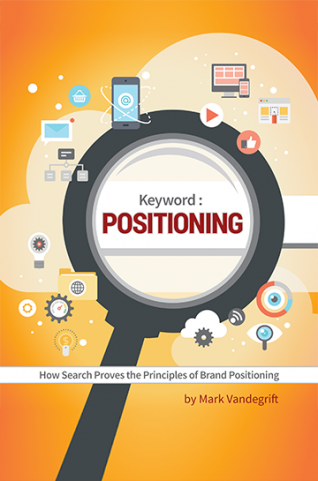The numbers are mind boggling.
Our amazing brains are wired with 100 billion cells, which researchers have found on average send signals 10 times per second. Each brain cell connects to 5,000 other brain cells, which means every time a cell fires, 5,000 other cells receive a signal.
You would think they would get tired.
Do the math: 100 billion x 10 firings per second x 5,000 connections = 5,000,000,000,000,000. That is 5 quadrillion bits of information moving around our brains every second— equivalent to a computer with a 1-trillion-bit-per-second processor. Now we know why we get headaches.
More than 99 percent of the work our brain does is outside our conscious notice.
We share this brain arithmetic to build our base for your understanding about how the principles of brand categories relate today to identity group politics. Consider that included in all of the information we process daily are about 6,000 product brand impressions.
How many brands do you remember from yesterday? If you remember 600, that’s 10 percent. Do you remember six? That would be one-tenth of 1 percent.
Our brain has learned how to cope with this continuous onslaught of sensory bombardment. It has developed a very efficient means of processing all this information. We pay very little attention to most of what’s going on around us.
That’s a big problem if you are trying to sell a product or service. To make sense of the world, our brain sorts information into categories, creating some order from all this chaos.
Think of each brand’s category as a ladder in your brain. There are thousands of categories, and therefore thousands of ladders in the brain. A step or rung on the category ladder represents each brand in that market.
Brand category
When communicating about your brand, be sure the category is clear. If it is not, your customers’ brains literally might not let your brand in. They won’t spend the time to figure it out.
You must spell it out for the brain. There are structures, gatekeepers, pathways and processes designed to filter incoming information. The brain is conserving energy and protecting itself from short-circuiting.
Brand position
Brands must differentiate from the others in the category ladder. That’s brand positioning. On the toothpaste category ladder, Aquafresh is on the ’fresh breath” step. In online search’s category, YouTube is on the “video search” ladder step. On the car ladder, Kia is “affordability.” On the cola ladder, Pepsi is the “younger generation” rung.
Identity group politics
The principle of brand product categories can help us understand identity group politics and how they divide us.
We suspect our brain’s built-in processing efficiency contributes to identity politics. It’s just so much easier to categorize groups of people by religion, ethnicity, gender, nationality, sexuality, wealth and political ideologies.
Without even being aware of it, we might be wired physically and psychologically to avoid all the extra “thinking” when we can just put people on category ladders in our minds and make assumptions about their beliefs and behaviors by their group membership.
Sexuality groups include gay, straight, lesbian, bisexual, transgender, asexual, pansexual and others. Just like with product brand categories, identity group categories subdivide. Facebook has more than 60 gender designations.
We also have a long list of political ideologies, from the far alt-left to the far alt-right and scores in between, pitting us against each other in perpetuating the us-versus-them narrative.
It is expedient for our brains to stick people on the group’s category ladder. It saves time and energy. But we can be overtaken by paralysis. We only see the group’s identity. We immediately make all kinds of reflexive associations. Women are automatically tagged as feminists. Blacks must actively support #BlackLivesMatter. Whites are privileged or supremacists or both.
In addition to our brain’s efficient processing behavior, another contributor are the super highways of group identity thinking: the social media platforms. The platforms’ algorithms juice negative stories, increasing our time on the platform. The more shares, comments and likes, the more money the platforms rake in. They are designed precisely for baiting us.
Multiply that by the ginned-up masses and you’ve got a recipe for unrestrained recklessness — on all sides of the political spectrum.
The Rev. Martin Luther King Jr. said, “I have a dream that my four little children will one day live in a nation where they will not be judged by the color of their skin, but by the content of their character.” His ideal captured our hearts and our minds and led to real change.
Can we take his instruction further and not prejudge using “identity groups” but rather look at each other as individuals?
Let’s not be so quick to label others or ourselves. Labeling is our brain’s shortcut. It is the lazy way out. Let’s not fall into the group identity trap, which we can see leads to intolerance and even hate. Let’s work harder to know, appreciate and understand each other as unique individuals.
The first step in making this change is to become aware. We can rise above this identity crisis and raise the quality of life, liberty and the pursuit of happiness for all.
Product brand categories are great for selling products but lousy for unifying our world.



